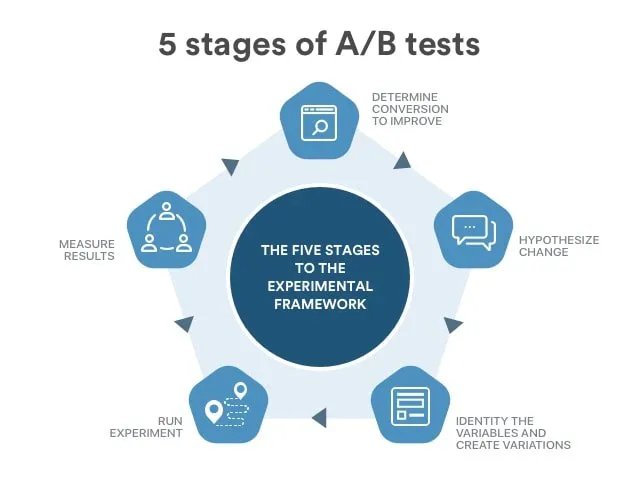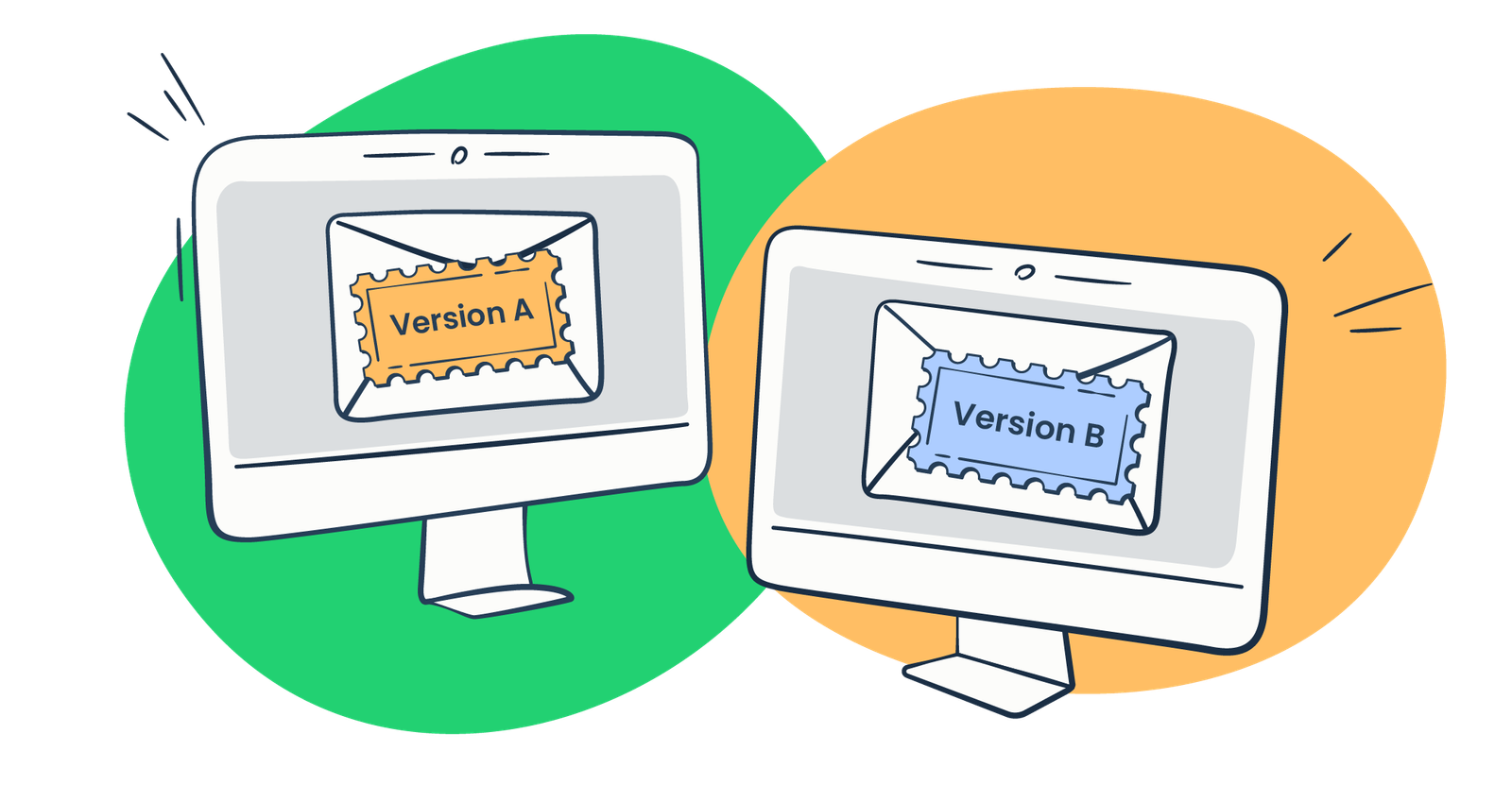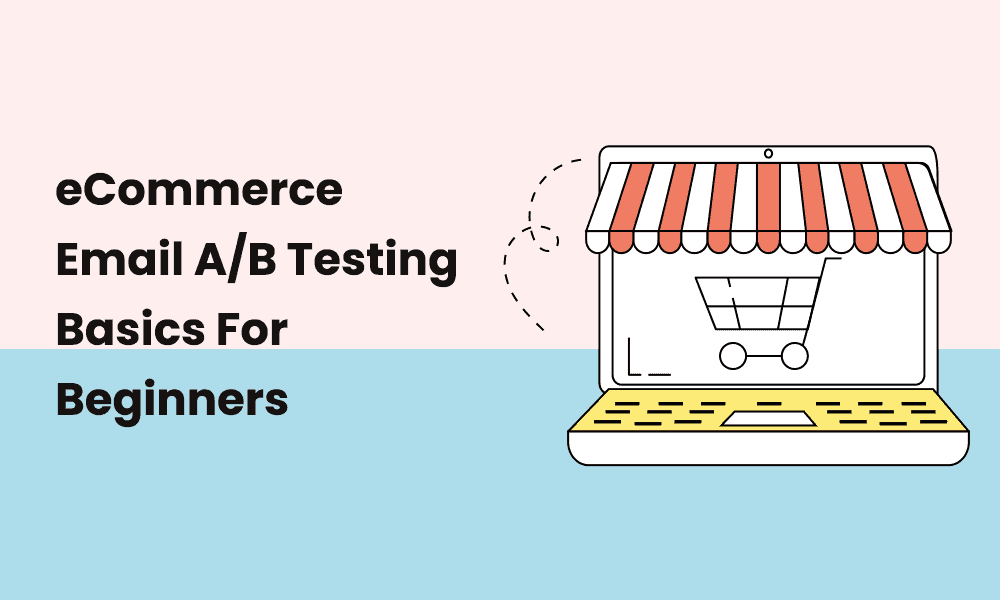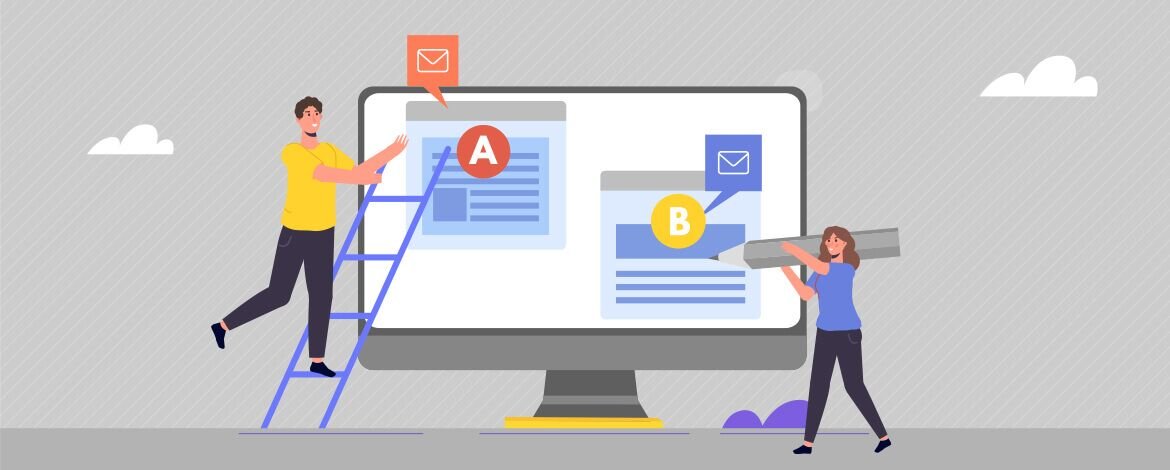How to A/B Test Email Elements: A Comprehensive Guide
In the competitive world of email marketing, understanding how to A/B test email elements is essential for improving your campaigns and achieving higher engagement rates. This guide serves as a deep dive into the intricate process of A/B testing, from understanding its fundamentals to analyzing results effectively. Whether you are a seasoned marketer or just starting, this comprehensive guide will equip you with the knowledge you need to enhance your email strategy.
Understanding A/B Testing in Email Marketing

Before diving into the specifics of A/B testing, it’s crucial to grasp what it entails and its significance in email marketing. A/B testing is a method used to compare two versions of an email against each other to determine which one performs better. The goal is to optimize your campaigns by making data-driven decisions based on real user behavior rather than assumptions.
What is A/B Testing?
A/B testing, also known as split testing, involves creating two variations of an email (Version A and Version B) with one differing element. For instance, you could experiment with two different subject lines to see which one garners a higher open rate. By sending these emails to similar segments of your audience, marketers can measure their performance based on predefined metrics.
The essence of A/B testing lies in its simplicity and effectiveness. It allows marketers to make informed choices about various email components, leading to improved click-through rates, conversion rates, and overall campaign effectiveness.
Importance of A/B Testing in Email Campaigns

The importance of A/B testing cannot be overstated. In a landscape where consumer preferences continually evolve, relying solely on past experiences or gut feelings can be detrimental. A/B testing empowers marketers to back their decisions with empirical evidence.
One primary advantage lies in its ability to reduce risk. By testing changes on a smaller scale before implementing them broadly, companies can minimize the potential negative impact of poorly received content. Additionally, A/B testing fosters a culture of continuous improvement, encouraging teams to experiment and innovate consistently.
Key Terms and Concepts in A/B Testing
Understanding key terminology in A/B testing is also critical. Here are some fundamental terms:
- Control Group: The version of the email that remains unchanged (Version A).
- Variant Group: The modified version of the email being tested (Version B).
- Conversion Rate: The percentage of recipients who took the desired action after receiving the email.
- Significance Level: A statistical term used to determine whether the results are due to chance.
Grasping these concepts will enable you to navigate the A/B testing landscape with confidence and clarity.
Identifying Email Elements to Test

Not all elements of an email are created equal when it comes to their influence on reader engagement. Identifying which specific components to test is vital for maximizing the effectiveness of your A/B tests. Focusing on the right elements will yield actionable insights that lead to improved performance.
Subject Lines: The First Impression
The subject line is often the first interaction a recipient has with your email, making it one of the most critical elements to test. A compelling subject line can significantly increase open rates, while a lackluster one may lead to your email being ignored or deleted.
When testing subject lines, consider variables such as length, use of emojis, personalization, and urgency. For example, try comparing a straightforward subject line like “Weekly Newsletter” with a more enticing option like “Unlock Exclusive Content Just for You!”
It’s important to note that different audiences may respond differently, so segmenting your list can provide valuable insights into what resonates best with different demographics. By gathering data on how varying styles affect open rates, you can refine your future communications to better capture your audience’s attention.
Sender Name: Who Are You to Your Audience?
The sender name can heavily influence whether recipients open your email. A recognizable or trusted sender name can build credibility and foster engagement.
To test sender names, consider variations such as using a company name versus a personal name or different department titles. For example, comparing “John from Marketing” against “Marketing Team at XYZ Corp” could reveal which resonates more with your audience.
Additionally, consistency in branding across your emails can improve recognition and trust. As you experiment, document the responses and adjust your approach based on your findings.
Email Copy: Engaging Your Readers

Once the subject line has done its job, the email copy takes center stage. Engaging, well-written content not only retains interest but drives recipients toward taking action.
When testing email copy, focus on aspects such as tone, length, formatting, and personalization. For example, you might compare a friendly and conversational tone against a more formal approach.
Remember to keep your target audience in mind; what works for one demographic may fall flat for another. Crafting tailored messages can significantly impact engagement levels.
Call-to-Action (CTA): Driving Action
The call-to-action (CTA) is arguably the most crucial part of any email since it directs the reader’s next steps. Testing CTAs can yield significant improvements in conversion rates.
Experiment with different button colors, sizes, wording, and positioning within the email. For instance, testing phrases like “Learn More,” “Get Started,” and “Claim Your Discount” can help determine which resonates best.
Positioning is also critical; place CTAs above the fold or strategically throughout the email. Analyze the data thoroughly to uncover what prompts the highest level of action from your audience.
Design Layout: Visual Appeal and Usability
The design and layout of your emails play a significant role in user experience. An appealing, easy-to-navigate email can enhance engagement while a cluttered or confusing design can deter recipients.
Testing design elements such as color schemes, image placements, and font choices can offer valuable insights into what works best for your audience. For instance, consider contrasting designs – one minimalistic and another more vibrant and colorful.
Focus on usability as well; ensure that your emails are mobile-friendly and that buttons or links are easy to click on all devices. As you conduct your tests, remember that aesthetics should complement functionality for optimal performance.
Designing Your A/B Test

After identifying the elements to test, designing a robust A/B test is your next step. A well-designed test ensures reliable results that can guide your marketing strategies moving forward.
Establishing Clear Goals and Objectives
Setting clear goals and objectives is paramount for successful A/B testing. What exactly do you hope to achieve through your tests? Is it increased open rates, higher click-through rates, or improved conversions?
Clearly defined objectives will guide your testing methods and help you focus on appropriate metrics afterward. For example, if your goal is to improve open rates, you may prioritize subject line testing over other elements initially.
Establishing success criteria ahead of time will also facilitate data interpretation post-test, allowing you to assess whether your hypotheses were correct.
Deciding on Sample Size and Segmentation
Choosing the right sample size is crucial for obtaining statistically valid results. Too small of a sample may render inconclusive outcomes, while too large may waste resources.
Segmenting your audience appropriately is equally important. Consider factors like demographics, purchase history, and engagement levels. Tailoring your tests to specific segments will provide insights that are more relevant to your unique audience.
Utilizing tools and analytics can assist in determining the ideal sample size and segmentation methods, ensuring your tests yield meaningful data.
Choosing the Right Metrics for Measurement
Identifying the metrics you will use to measure success is crucial for interpreting your results effectively. Depending on your goals, you may focus on metrics such as open rates, click-through rates, or conversion rates.
Additionally, you may want to track secondary metrics like bounce rates or unsubscribe rates to gain deeper insight into customer behavior. Defining your metrics early will streamline the analysis process and help you gauge the effectiveness of your email elements accurately.
Setting Up the Testing Environment
GoHighLevel is a powerful platform designed to streamline the A/B testing process for email marketing campaigns. It offers automation tools and advanced analytics that allow marketers to set up and manage A/B tests effortlessly. With features like campaign segmentation, real-time performance tracking, and customizable templates, GoHighLevel helps optimize email elements such as subject lines, CTAs, and email design. By integrating seamlessly into the testing environment, GoHighLevel enhances efficiency and provides actionable insights for improving email engagement and conversions.
Executing the A/B Test
With your test designed and prepared, it’s time to execute it effectively. Timing plays a pivotal role in optimizing engagement, so careful planning is necessary.
Timing: When to Send Your Emails
Timing can significantly impact open and click rates. Factors such as the day of the week and time of day should be considered when deciding when to send your A/B test emails.
Test different sending times by scheduling emails at various intervals, including weekends versus weekdays or morning versus afternoon slots. Evaluating when your audience is most active will yield insights into peak engagement periods.
Keep in mind that your target audience may have unique habits, so tailoring your sending strategy to their behaviors will produce better results.
Sending the Test Emails

Once everything is set, it’s time to send your test emails. Ensure that both versions are dispatched simultaneously to maintain consistency in external factors.
Monitor the initial responses closely for any immediate technical issues that may arise. Confirm that the tracking mechanisms are functioning correctly and ready to capture the performance metrics you wish to analyze.
Monitoring Performance: Real-time Analysis
Monitoring performance in real-time enables you to catch any anomalies early and adjust your strategies accordingly. Utilize analytics tools to assess open rates, click-through rates, and other predefined metrics.
Analyzing real-time data also allows for quick adjustments when necessary. If one variant is clearly outpacing the other, you might consider stopping the test early to capitalize on the winning version for future campaigns.
Stay vigilant throughout the process, ensuring that you’re responsive to shifts in user behavior as they unfold.
Analyzing Results and Drawing Insights

After executing your A/B test, it’s time to dive into the data you’ve collected. Analyzing results meticulously is vital for uncovering actionable insights that can inform your future strategies.
Interpreting the Data: Statistically Valid Results
Interpreting the data requires a solid understanding of statistical concepts. Ensure that your analysis accounts for statistical significance, which determines whether the observed differences were likely due to chance or actual variations in user behavior.
Utilize analytics tools that provide insights into statistical validity. This may involve calculating p-values or confidence intervals to validate your results.
Being thorough in your analysis helps you avoid jumping to premature conclusions. Focus on understanding the nuances behind the numbers, as they can inform your decision-making process and shape future campaigns.
Understanding Customer Behavior Insights
Beyond just crunching numbers, analyzing A/B test results offers valuable insights into your customers’ behavior. Identify patterns and trends that emerge from the data.
For example, if certain subject lines elicit higher open rates among specific demographics, it may indicate preferences or interests worth exploring further.
Understanding customer behavior can empower you to create targeted messaging that aligns closely with your audience’s needs, ultimately driving engagement and loyalty.

Making Decisions Based on Test Outcomes
Making informed decisions based on your test outcomes is crucial for refining your email marketing strategies. Determine which version of the email performed better and integrate those elements into your future campaigns.
Consider documenting not only the successful outcomes but also the lessons learned from less effective tests. Continuous learning from A/B testing provides insights that contribute to ongoing improvement.
While some tests may lead to unexpected results, these can still inform your approach and result in innovative ideas for future experimentation.
Implementing Changes: From Testing to Execution
Once you’ve drawn insights from your results, it’s time to implement changes in your email strategy. Use the winning elements to craft more effective emails moving forward.
Additionally, consider running follow-up tests to continue refining your approach. A/B testing is an iterative process, and regularly experimenting with new ideas will help you stay ahead in the ever-evolving landscape of email marketing.
Best Practices for Ongoing A/B Testing

The practice of A/B testing should never be seen as a one-off endeavor. Instead, cultivating a culture of continuous experimentation enhances your email marketing effectiveness over time.
Continuously Testing: A Culture of Experimentation
Establishing a mindset of curiosity and experimentation fosters creativity within your team. Regularly test new ideas, designs, and approaches to keep your email campaigns fresh and engaging.
Encourage team members to propose and run their A/B tests, and share successes and failures openly. This collaborative approach can inspire innovative ideas and generate excitement around new initiatives.
Moreover, continuously testing keeps you agile, allowing you to adapt quickly to changing audience preferences and market trends.
Documenting and Sharing Results with Teams
Documentation is key to building a repository of knowledge regarding what works and what doesn’t. Maintain detailed records of each A/B test, including hypotheses, outcomes, and insights gained.
Share these results with your team to foster a collaborative learning environment. Encourage discussions around successful strategies and challenges faced during testing.
This shared knowledge base can help everyone involved in email marketing become more informed and skilled at crafting effective campaigns.
Staying Updated on Industry Trends and Techniques
The digital marketing landscape is ever-changing, so staying updated on industry trends and techniques is essential. Participate in webinars, read industry publications, and network with fellow marketers to glean insights into emerging practices.
Being aware of the latest innovations in A/B testing and email marketing can inspire new ideas and enhance your testing strategies.
Regularly educating yourself and your team will ensure that your email marketing remains relevant and impactful.
Integrating GoHighLevel into Your A/B Testing Strategy

With the rise of sophisticated marketing platforms, integrating tools like GoHighLevel into your A/B testing strategy can significantly enhance your effectiveness. GoHighLevel offers powerful features that facilitate seamless testing and optimization of your email campaigns.
Leveraging GoHighLevel for Seamless Testing
GoHighLevel provides a user-friendly interface that simplifies the A/B testing process. Its intuitive tools allow marketers to create and launch tests effortlessly, enabling you to focus on strategy rather than tedious setups.
With customizable templates and easy editing functionalities, GoHighLevel empowers marketers to experiment with various email elements without extensive technical skills.
Additionally, its automation capabilities help manage and organize your campaigns efficiently, streamlining the entire process from creation to execution.
Automation and Analytics: Streamlining Test Execution
Automation is a game-changer for A/B testing. GoHighLevel’s automation features allow you to schedule tests, segment audiences, and analyze results seamlessly, saving time while enhancing your productivity.
Its built-in analytics tools provide real-time data and performance insights that facilitate quick decision-making. This streamlined approach allows you to focus on optimizing your strategy based on the feedback garnered from your A/B tests.
By employing automation to handle routine tasks, you free up more bandwidth to explore creative ideas and innovative strategies that can lead to greater success.
Improving Email Campaigns with Data Insights
GoHighLevel’s analytics capabilities enable you to gather valuable data insights that directly inform your email marketing strategy. Analyze the performance of your A/B tests and apply the learnings to future campaigns.
Leveraging these insights can help you create personalized messaging that resonates with your audience, leading to improved engagement and conversion rates.
As you continue to refine your email campaigns with GoHighLevel, you’ll likely notice an upward trend in overall performance, thanks to the data-driven decisions made possible through effective A/B testing.
Conclusion
Mastering the art of how to A/B test email elements is crucial for any marketer looking to elevate their email marketing game. From understanding the basics of A/B testing to identifying key elements to test and analyzing results, each step plays an integral role in optimizing your campaigns.
By embracing a culture of experimentation, leveraging tools like GoHighLevel, and consistently analyzing customer behavior, you can create highly effective email campaigns that drive engagement and conversions.
As you embark on your A/B testing journey, remember that continuous learning and adaptation are vital for success. The insights you gain from testing today will serve as the foundation for tomorrow’s achievements. Stay curious, remain agile, and let the data guide you toward marketing excellence.





